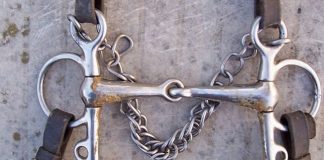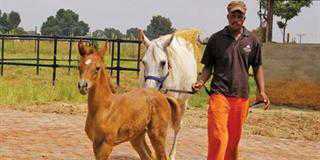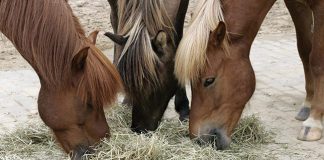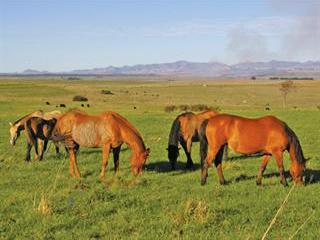
The horse has evolved over approximately 45 million years from a small creature to a large, fast-running, plains-dwelling animal, which feeds mainly on grass, herbs and fibrous plant material. Its teeth and digestive system are made to handle roughage. Think of the large intestine as a big fermentation vat. This is where the food is broken down into smaller and smaller components, helped by bacteria and other micro-organisms.
Disease prevention starts with diet. The best diet for a horse is grass which has been very well fertilised and contains natural herbs. A good rule of thumb is a horse 16 hands (about 1,6m) high should receive 16kg roughage a day.
A horse not at work should receive one-third concentrate, with the rest roughage. A hack should receive half concentrate and half roughage. For show or endurance work, the ration is two-thirds concentrate to one-third roughage.
Acid
Under normal conditions, a horse will graze for 16 hours a day. A fair amount of this is done at night. Unlike the human digestive tract, that of horse produces acid continually. As a result, it requires food to be processed continuously in small quantities. A horse that “wind sucks” is simply easing its discomfort due to excessive acid build-up in the stomach.
By wind sucking it produces saliva, which neutralises this acid build-up and affords it some measure of relief. Old horses need more fibre. Foals must have their ribs showing, as too much protein will affect bone development. They shouldn’t eat out of their mother’s manger until older than six months.
Grass
In your paddock, the grass should be no higher than 2,5cm. After excessive rain, when the grass is very green, remove your horses from the paddock. Cut the grass and discard the cuttings before returning your horses, as this grass becomes toxic to them. Lucerne is a flowering plant from the legume family, and the flowers have a calming effect on horses.
Herbs are wonderful additions to any paddock. Most of the common herbs are easy to grow. Horses allowed to graze will naturally be drawn to those they need to be healthy. If the following plants occur in your paddock, your horse will have a much lower worm load: fennel (40g); tansy (35g); rue (40g); wormwood (25g); red clover (30g); garlic (30g).
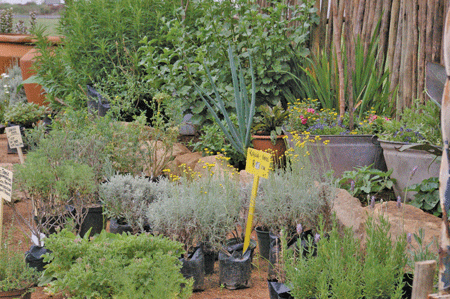
This makes 200g, which is sufficient for a 350-650kg horse. Caution: pregnant mares aren’t allowed rue, red clover or aloe. Rather increase garlic and carrot intake. Also pour/squirt 6ml apple puree down the throat and dose with 20g aloe powder. Repeat after 10 days.
Contact Kim Dyson on [email protected]. Please state “Horses” in the subject line of your email. •FW











